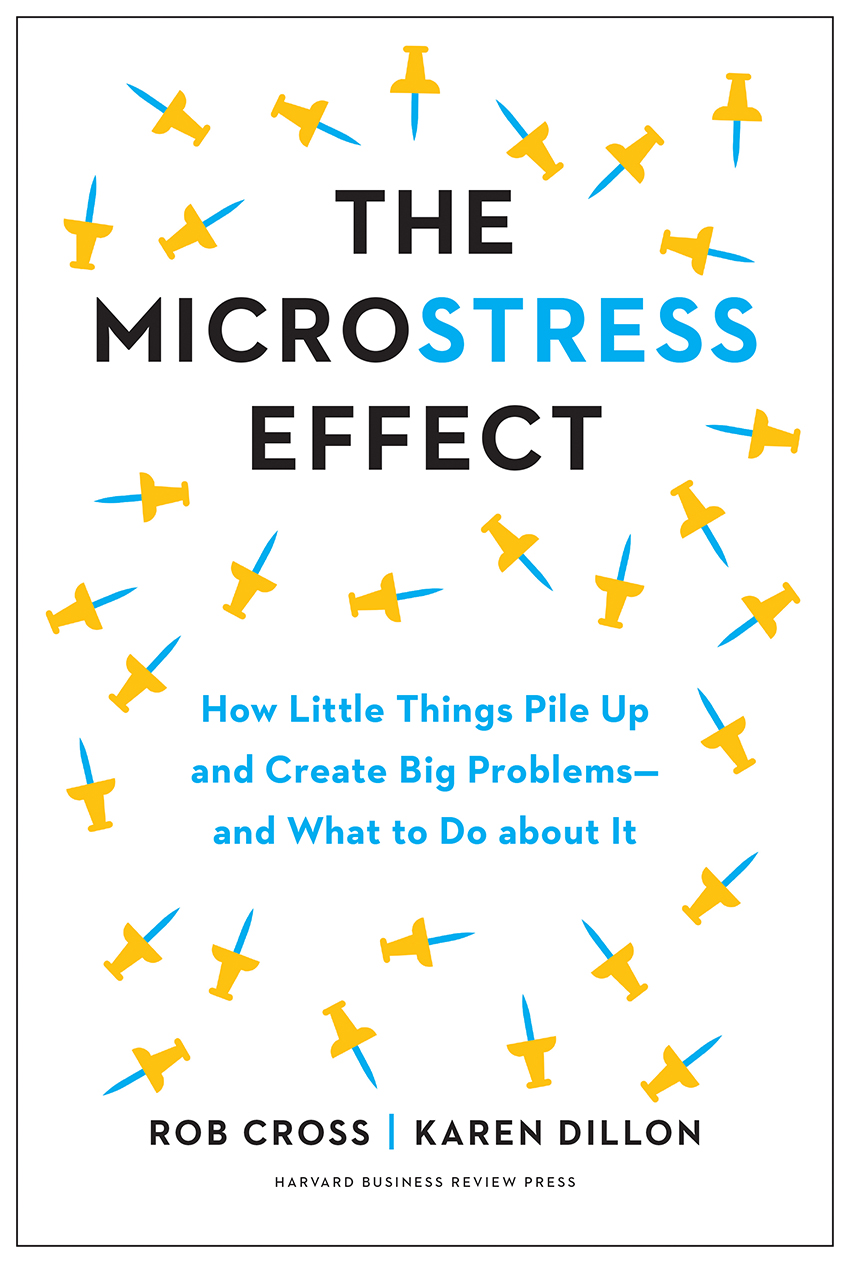By Ray Bert
The Microstress Effect: How Little Things Pile Up and Create Big Problems — and What to Do About It, by Rob Cross and Karen Dillon. Boston: Harvard Business Review Press, 2023; 293 pages, $30.
As civil engineers, when you start talking about microstresses, many of you probably think first about concrete and steel. But there’s a good chance that you’re also dealing with a form of that word that is even closer to home: the daily accumulation of tiny negative effects resulting from interactions with others that leave many of us — even those who are clearly high achievers — feeling constantly overwhelmed.
Whether a last-minute shift in work priorities by an otherwise well-intentioned supervisor, missing a promised appearance at your child’s performance because you were stuck in traffic, slowly losing touch with a valued friend as life (or a pandemic) takes you in new directions, or hundreds of other examples, microstresses can chip away at us, silently but relentlessly. The Microstress Effect explores this new permutation of stress and its effect on our brains and our lives.
Our constantly connected world at work and home ramps up the number of interactions and demands on our time and attention (including those that we willingly, if unwisely, choose). This inevitably results in significantly more small pressures that we may not even notice individually but that cumulatively take their toll — albeit less obviously than seismic shifts such as a significant personal trauma or a specific toxic workplace or relationship situation.
Rob Cross, a professor of leadership and an expert in organizational network dynamics at Babson College, stumbled onto what he calls “an epidemic of microstress” while doing interviews with high achievers about collaboration.
He refocused his research on the new topic, in part because he realized he was suffering the same effects. “I had been telling myself I could survive if I could just get through this one week. Except every week became that one week,” Babson writes, going on to describe being in the worst physical shape of his life and feeling disconnected from his most important relationships.
Cross discovered in his research that part of the problem is how our brains deal with microstresses, which can be “missed” by our instinctive biological mechanisms meant to help us maintain balance in the face of more obvious stresses. Yet they accumulate and do us damage anyway. The authors quote a behavioral neurologist who analogizes it thusly: “Imagine wind eroding a mountain. It’s not the same as a big TNT explosion that punches a hole in a mountain. But over time — if the wind never stops — it has the potential to slowly wear an entire mountain down to a nub.”
Cross recruited Karen Dillon, a writer and former editor of the Harvard Business Review who had co-authored three books and who, importantly, had effected positive change in her life by radically altering her career and her approach to it. They resolved to write a book that ultimately delineated 14 types of microstress in three major categories, designed to help people recognize microstress and what causes it — and crucially how to overcome it.
The first primary category of microstress, covered in a chapter titled Why You Can’t Keep Up Anymore, is defined as capacity-draining microstresses. Examples include small errors or underperformance by work colleagues that you must make up for or inefficient communication practices that waste time by distracting you.
The other categories of microstresses are those that deplete your emotional reserves (such as “secondhand stress” from others close to you or trust issues with colleagues or loved ones) and those that challenge your identity (think any situation where you act in a way that you feel you are expected to but that is not natural for you). A frequent note for all categories is how these small effects can ripple outward significantly.

The Microstress Effect is peppered with strategies for individuals and teams on identifying, avoiding, addressing, or eliminating sources of microstresses of all types. Short “coaching break” sidebars provide helpful exercises or sequences of actions to try. And fully half the book focuses on broad-based ways to cope, improve, and thrive — from finding resilience to staying healthy and finding your purpose.
A key chapter focuses on what the authors call the “ten percenters” — the subset of high achievers who manage microstress exceptionally well while also leading “rich, multidimensional lives.” The three common habits for this group sound deceptively simple: push back on some specific microstresses; be conscious of, and stop causing, microstress for others (which tends to boomerang back on you); and rise above some microstresses by approaching your life in a way that allows you to shrug them off.
In closing the book, the authors remind us to “think small.” Returning to a frequently repeated truism based on research that negative interactions have five times the impact of positive ones, they remind us that removing just a few small microstresses — especially ones that recur frequently — can have an outsized impact on our lives.
Practical, dense with real-world examples, refreshingly free of eye-rolling rah-rah exhortations, and endlessly relatable for most of us “90 percenters,” The Microstress Effect might be the most eye-opening book you read this year.
This article first appeared in Civil Engineering Online.



